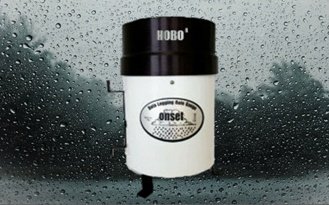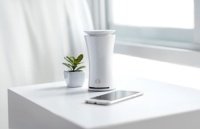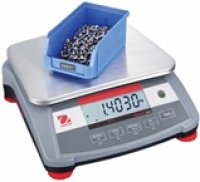Your Ultimate Rain Gauge Installation & Maintenance Guide

Our team of scientists regularly welcomes inquiries about installing and take care of weather sensors, like rain gauges. Accurate rainfall measurements depend entirely on how you set up and maintain your rain gauge. Because there are some key rain gauge management considerations, we came up with a list of tips and tricks to help you get it right from the get-go.
About Rain Gauges
A rain gauge is a meteorological instrument for measuring a given volume of rainfall per unit time per unit area. There are three categories of rainwater gauge, each characterised by a specific method of rainfall data collection.
1. Tipping Bucket Rain Gauge: Also known as “tipping spoon rain gauges”, these are by far the most popular rain gauge style. They feature a standard size “bucket” that fills with precipitation, then when the bucket is full, it tips the rainwater over a reed switch or sensor that records the bucket’s known water volume. This mechanism is built-in to many models, from entry-level sensors to professional units.
2. Weighing Rain Gauge: This type of rain gauge generates rainfall data by measuring the weight of rain it collects.
3. Radar Rain Gauges: Radar stands for Radio Detecting and R Radio waves transmit a short pulse that returns to a base unit for measurement whenever the pulse wave bounces off an object in its path – in this case; it’s rainfall.
What To Consider When Installing A Rain Gauge

1. Location of Your Installation
One of the most common questions we receive from our customers is, “where should I locate my rain gauge?”.
Our answer: Where possible, avoid mounting your station near buildings, fences or trees that could obstruct the collection of precipitation.
It’s OK to position your gauge at a distance that’s at least 2 x the nearest obstruction’s height, but ideally, it should be four times away. For example, if a house is 10m high, your rain gauge should be set up at least 20m, but 40m away is perfect.
2. Ensure Your Gauge is Level
“A level rain gauge is an accurate rain gauge”, which is especially true for tipping bucket rain gauges due to the sensitivity of the tipping bucket mechanism. If your rain gauge is in any way unbalanced, your carefully calibrated system will be disturbed, and inaccurate readings will result.
3. Height Above Ground
Wind can create rainfall measurement error. Because wind speed often increases with height above ground, so don’t be surprised if a weather station mounted some distance from ground level doesn’t meet your expectations. Our scientists recommend a distance of 0.3 meters from the top of your rain collecter to ground level.
Your Rain Gauge Is Installed - Now What?
Once your gauge is installed in an ideal location, you need to maintain it well.
Both tipping buckets and weighing rain gauges collect rain directly to a measuring mechanism via a funnel. This method exposes to the elements a measuring system susceptible to collecting debris like leaves, sticks, insects - even bird droppings. Any funnel or gauge housing obstructions will affect your device’s accuracy.
Our scientists have detailed the five steps you need to keep your rainwater gauge shipshape.
- Check and remove any items from the rain funnel and the debris filter.
- Open the rain gauge and remove any foreign objects.
- If your rain gauge is self-emptying, check for any obstructions in the exit path.
- Use a soft, damp cloth to wipe away dust. Pay close attention to tipping spoons as dust often accumulates here.
- Check that the gauge is level before and after reassembly.
Rain Gauge Inspiration
Instrument Choice’s team of scientists have assembled below four representative examples to better inform you of the type of rain gauges on offer.
To browse our full range of rain gauges, click here.
For more information and for help to find the best instrument for your needs, contact us!

Tipping Bucket Budget Rainwater Gauge
Digital Rain Gauge with Temperature
Product code: IC-XC0430
The IC-XC0430 is the most popular rain gauge for most people. It’s budget-friendly and features a wireless, self-emptying outdoor sensor that measures both rainfall and temperature. The information collected transmits to an indoor display unit, which you can locate up to 150 metres away.

Tipping Bucket Professional Rainwater Gauge
Precipitation Monitoring Station with Stainless Steel Rain Gauge
Product code: IC-SNiP-SRG-A
Attention, weather buffs and professionals! The SNiP-SRG is a 'Sensor Node Integrated Package' for LoRa, LoRaWAN, FSK or CAT-M1 communication for real-time precipitation and rainfall measurements. We recommend this unit for the continuous environmental monitoring of a designated site.

Weighing Rainwater Gauge
Weight Precipitation Sensor
Product code: IC-15184-raine
The IC-15184-raine is an innovative weighing precipitation sensor that achieves accuracy in a compact design. The unique self-emptying collection system captures every single drop to a very high resolution of 0.001 mm/m2!

Ultrasonic Rainwater Gauge
HY-WDS6E Weather Station
Product code: IC-HY-WDS6E
The IC-HY-WDS6E is a complete weather station that measures rainfall and temperature, humidity, barometric pressure, wind speed and wind direction. The sensor uses radar capable of precisely measuring precipitation at rates of 0 - 100mm per hour.
Conclusion
Guaranteeing that your rain gauge always performs to your expectations requires four easy steps:
- Select an ideal installation location
- Once installed, ensure the gauge is level and at the recommended height; and
- Undertake regular maintenance (as our scientists prescribe in this article).
Need assistance finding the ideal installation location for your rainwater gauge? Speak with an Instrument Choice Scientist: Call 1300 737 871 or email [email protected].
Also interesting
Instrument Choice’s team of scientists regularly reviews new and popular products, so when searching for the perfect scientific instrument for your application, you can make more informed decisions.
This review looks at the uHoo Indoor Air Quality Analyser. This WiFi-enabled meter monitors nine air quality factors that impact health and well-being in the home.
Get our scientists’ review of the uHoo Indoor Air Quality Analyser here.

At Instrument Choice, we proudly stock over 150 brands of scientific instruments and laboratory equipment. Our mission is to provide our customers with the broadest selection of scientific instruments, all in one place, so you can measure anything and measure everything.
To help you find the best products to suit your application, Instrument Choice Scientists regularly spotlight new and popular brands so you can keep up to date with what’s on offer.
This edition features OHaus and its series of industrial bench scales.
Check out OHaus and their industrial bench scales here


